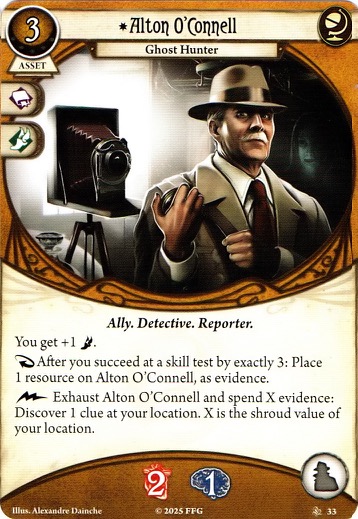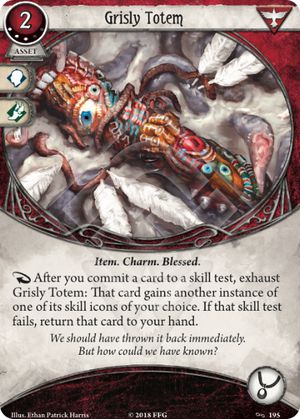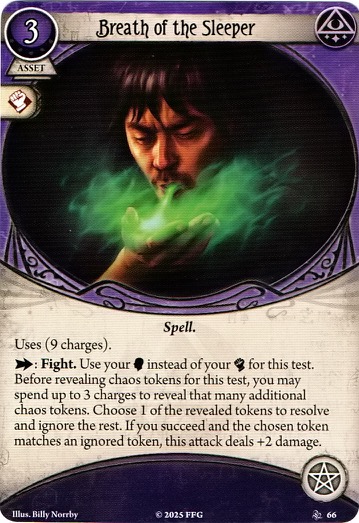
I actually like this card. There are a few scenarios where you want to dig through the encounter deck to find an objective that's hidden near the bottom. Admittedly, that's not many scenarios; certainly not enough to justify taking this card in a vacuum. To be worthwhile, it's going to need extra support--and I'd argue that rather than encounter deck manipulation, what you really want is curse tech.
Although digging for a special location or scenario objective is rare, VP enemies hidden in the encounter deck exist in the vast majority of games. Antediluvian Hymn helps you push those juicy mini-bosses up to the top and add up to 5 to the bag in the process. (Literal bonus points if you find a VP enemy, order it to go to your fighter and then fish it out using Delve Too Deep.)
So who wants this card? No, not Gloria--it fits best with Mystics who use curses to fight:
Dexter Drake armed with Armageddon and Skeptic.
Kōhaku Narukami with Manipulate Destiny and Rod of Carnamagos.
Agatha Crane with Olive McBride and Gaze of Ouraxsh.
...you get the idea. This card isn't Scrying and you're not using it to fail less. It's win-more tech to help you locate what you WANT out of the encounter deck, and the curses you generate are going to help you flatten it when you find it.



